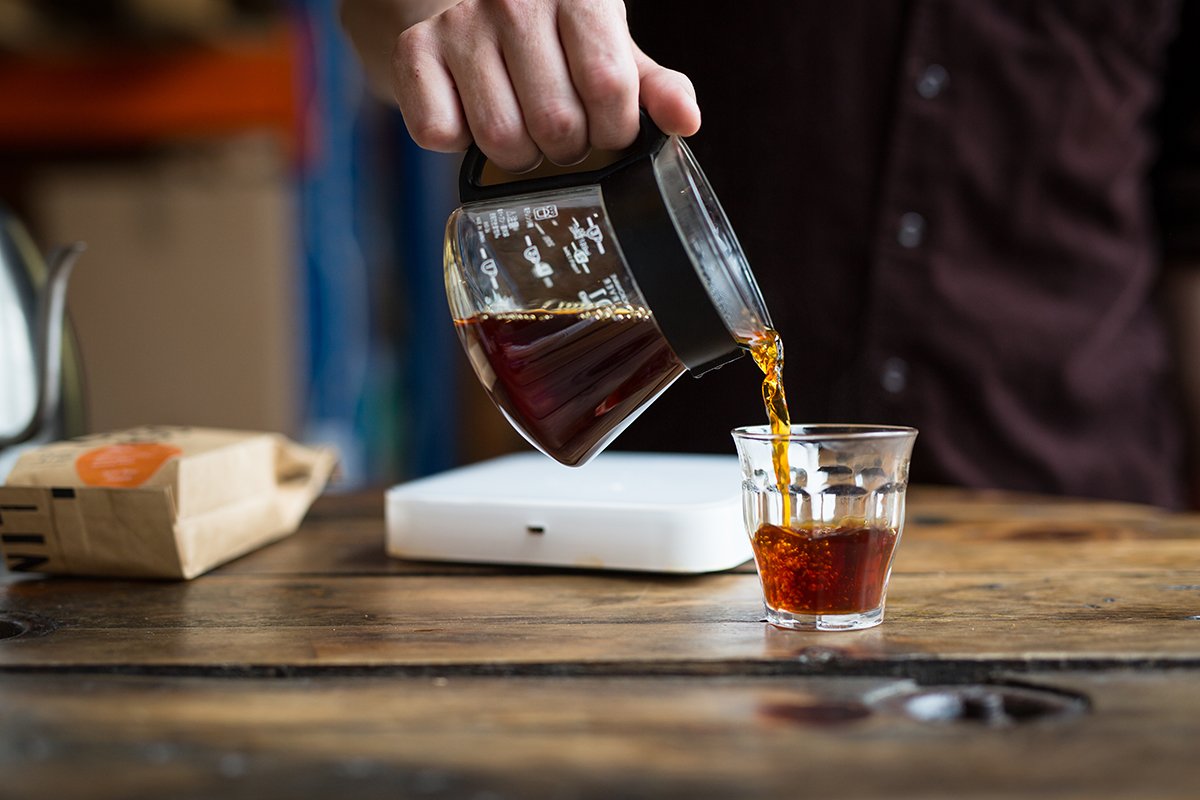Batch brew may possibly be the least sexy brew method out there, but damn is it convenient — not to mention cost-effective and consistent, whether you’re brewing it in your cafe, office, or at home.
When you’re trying to make decent tasting coffee for a large amount of people batch brew is the way to go. There are a wealth of machines out there that all do things a bit differently, but basically, they’re putting hot water over ground coffee just like in all those American diners in the movies — speciality machines mean that this coffee can be absolutely delicious. Sometimes you might run into issues with consistency and over-extraction thanks to the nature of batch brew.
In steps the bypass method. Basically, the bypass method is creating a concentrated brew (through less water and a finer grind) and then adding in the water you’ve taken away after you’ve brewed.
The main reason we looked at using the bypass method was because we were consistently over-extracting the coffee (we couldn’t grind our coffee coarse enough to not over-extract). The batch brewer we were using is also prone to channelling, meaning we were often getting both over and under-extracted coffee — not pleasant. We hoped that using the bypass method would solve the first problem and reduce the chance of the second and also stop brew bed overflow (too much water and coffee, not enough space).
We went for a 30% bypass (midpoint between the recommended 20-40%) and we were brewing two litres of coffee with a dose of 120g. This meant 1.4l of our water was going to go through our 120g of coffee and 600ml of water was going to be heated and then added after we’d brewed.
Our first try we still came out over-extracted (23% instead of the optimum 18-22%) we’d ground at 8 on our EK (we were always grinding between 10 and 11 before) and ended up with a 2.05% TDS (1.4% with the water added). We could find these numbers thanks to a refractometer (a little device that pulses light through liquid to work out how many solids are dissolved in the liquid) — but, if we hadn’t have had that we would have tasted the coffee and know it wasn’t right (we did taste it, of course).
Over the next week or so we kept experimenting, using different coffees from different origins and processed with different methods until we were consistently getting good extraction rates and — much more importantly — consistently delicious coffee.
The same principles apply for making batch brew at home, whether you've got a small batch brew machine, or you're making a decanter of pour-over. Also, try it with your Aeropress at home — same parameters apply.
Basically a win for the bypass method — you get more control over your variables so you can hit optimum extraction (and much tastier coffee), less of a risk of channelling, and happy coffee drinkers.



